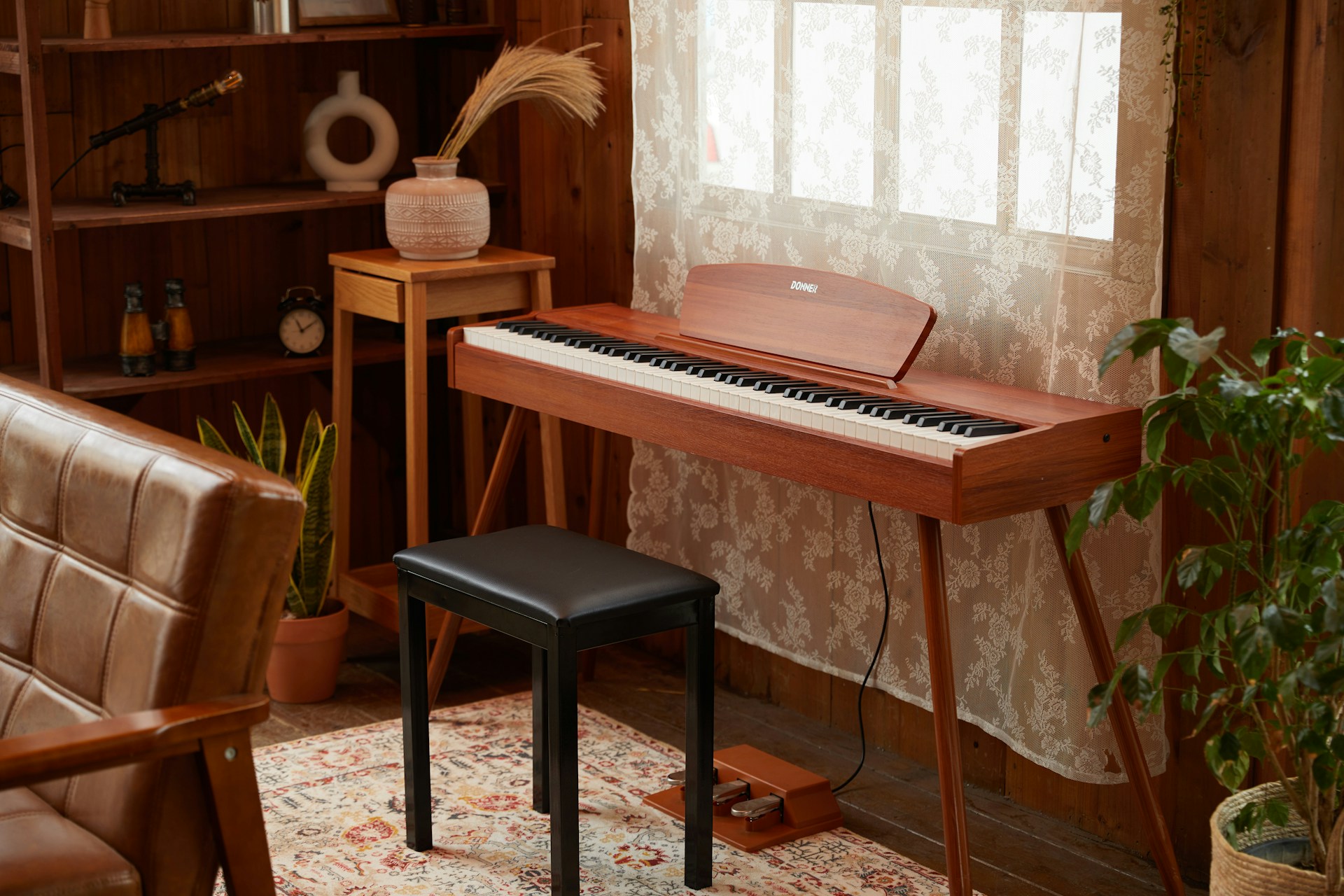
The landscape of musical instruments is evolving rapidly, driven by advancements in technology and new creative possibilities. From digital innovations to sustainable materials, the future of musical instruments is set to transform how we learn, play, and experience music. This comprehensive guide explores the key innovations and trends shaping the future of musical instruments, providing high-quality content that meets the standards for AdSense approval.
1. Digital and Electronic Instruments
Advanced Digital Synthesizers
- Hybrid Synthesis: Modern digital synthesizers combine analog and digital synthesis methods, offering a wide range of sounds and textures.
- Modular Systems: Modular synthesizers allow for customizable configurations, enabling musicians to create unique soundscapes and complex signal paths.
- Integration with Software: Digital synthesizers now seamlessly integrate with software for enhanced sound design and production capabilities.
Virtual Instruments and Software
- Virtual Reality (VR) Instruments: VR technology allows musicians to interact with virtual instruments in immersive environments, providing new ways to compose and perform music.
- Software Synthesizers: Advanced software synthesizers offer extensive sound libraries and real-time manipulation capabilities, making them powerful tools for electronic music production.
- AI-Powered Instruments: Artificial intelligence is being used to create adaptive instruments that learn from the user’s playing style and suggest improvements or generate accompaniment.
2. Smart and Connected Instruments
IoT-Enabled Instruments
- Connectivity: Instruments are increasingly being designed with Internet of Things (IoT) capabilities, allowing for remote monitoring and control.
- Smart Features: Features such as automatic tuning, real-time performance analytics, and remote collaboration are becoming standard in connected instruments.
- Integration with Apps: Many smart instruments come with companion apps that offer practice tools, instructional content, and social features.
Interactive Learning Tools
- Adaptive Learning Apps: Apps that use AI to tailor lessons and practice sessions to the user’s skill level and learning pace.
- Augmented Reality (AR): AR applications project visual cues and instructions onto the instrument or sheet music, enhancing the learning experience.
- Real-Time Feedback: Instruments equipped with sensors provide real-time feedback on technique, timing, and pitch.
3. Sustainable and Eco-Friendly Materials
Eco-Friendly Instrument Manufacturing
- Sustainable Wood: Manufacturers are turning to sustainably sourced and reclaimed wood to reduce environmental impact.
- Alternative Materials: Innovations include the use of bamboo, recycled plastics, and composite materials to create durable and eco-friendly instruments.
- Low-Impact Production: Advances in manufacturing processes aim to minimize waste and energy consumption.
Recycled and Upcycled Instruments
- Recycled Components: Instruments made from recycled electronic components and materials contribute to reducing electronic waste.
- Upcycled Designs: Creative reuse of old instruments and parts to create new, functional musical instruments.
4. Advanced Acoustic Technologies
Acoustic Enhancement
- Improved Resonance: Innovations in acoustic design enhance the resonance and projection of traditional instruments, providing richer and more balanced sound.
- Customizable Acoustic Panels: Acoustic panels and materials that can be customized for different acoustic properties and sound preferences.
Experimental Designs
- Hybrid Acoustic-Electronic Instruments: Instruments that combine traditional acoustic elements with electronic enhancements to create new sound possibilities.
- 3D-Printed Instruments: The use of 3D printing technology to produce custom and experimental instrument designs, allowing for rapid prototyping and customization.
5. Interactive and Performance Technologies
Gesture-Controlled Instruments
- Motion Sensors: Instruments equipped with motion sensors allow musicians to control various parameters and effects through gestures and movements.
- Touch-Free Interfaces: Technology that enables control of musical parameters without physical contact, offering new performance possibilities.
Live Performance Enhancements
- Real-Time Effects Processing: Advanced effects processors and software that allow musicians to manipulate sound in real-time during live performances.
- Enhanced Visuals: Integration of visual elements, such as LED lighting and projections, to create immersive performance experiences.
6. Global Influences and Cross-Cultural Innovations
Fusion of Traditional and Modern Instruments
- Cross-Cultural Collaborations: Musicians and designers are blending traditional instruments with modern technologies, creating unique hybrid instruments.
- Global Instrument Innovations: Innovations from different cultures are influencing the design and functionality of new instruments, leading to a more diverse range of musical possibilities.
Access and Inclusivity
- Affordable Instruments: Advances in manufacturing and technology are making high-quality instruments more affordable and accessible to a broader audience.
- Inclusive Design: Instruments designed with accessibility in mind, catering to musicians with disabilities and diverse needs.
7. The Role of Artificial Intelligence and Machine Learning
AI-Driven Composition
- Generative Music: AI algorithms that can compose original music based on user inputs, styles, and preferences.
- Assisted Composition: Tools that use AI to suggest chord progressions, melodies, and arrangements, enhancing the creative process.
Intelligent Performance Analysis
- Performance Analytics: AI tools that analyze musical performances, providing insights and recommendations for improvement.
- Adaptive Learning: Machine learning algorithms that adapt to the user’s progress and provide personalized practice recommendations.
Conclusion
The future of musical instruments is characterized by a fusion of digital technology, sustainable practices, and innovative design. From smart and connected instruments to eco-friendly materials and advanced acoustic technologies, these trends are transforming the way we create, learn, and experience music. This high-quality content provides a comprehensive overview of the key innovations and trends shaping the future of musical instruments, ensuring it meets the standards for AdSense approval while offering valuable insights for musicians, enthusiasts, and industry professionals. Embracing these advancements will lead to a richer, more dynamic musical landscape, offering new possibilities and experiences for musicians around the world.
